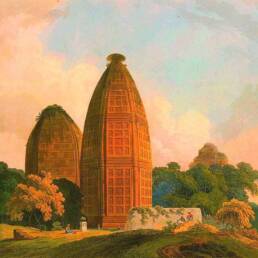The phrase “New Year” is commonly associated with the word “happy,” but for more than a billion Muslims throughout the world, the New Year is not a time for celebration. Why is that? Explained.
This year, 19th July marked the beginning of 1445 AH of the Islamic lunar calendar. AH stands for “Anno Hegirae,” which means “In the Year of the Hijra” in Latin.
The word “Hijra” in Arabic means “to migrate.” It refers to the day in AD 622 when the Prophet Muhammad began his migration from Mecca to Medina with his band of followers.
This also marks the beginning of the first month of the “Hijri Calendar,” Muharram. The word Muharram is derived from the word “haram,” which means forbidden or prohibited. It is one of the four sacred months in the Islamic calendar, wherein all warfare is prohibited.
Contrary to popular belief, there is no one calendar used by Muslims throughout the world. Iran uses a Solar Hijri calendar called the Shamsi/Khorshidi calendar, which also begins with the Hijra. It was also used in Afghanistan until the Taliban replaced it with the Lunar calendar.
The Ismaili and Shi’a communities sometimes use the Tabular calendar, in which arithmetic calculations determine the months and the days rather than astronomy. They believe that it was developed by Ali, the fourth khalifa/caliph, who becomes important later in our story.
The “Ashura,” literally the 10th day, is the most important day of the month. The calendars we use at home usually mention it as ‘Muharram.’

Muslims believe that it was on this day that Nuh (Noah) returned to land from the ark and Musa (Moses) was saved from the oppression of the Pharaoh of Egypt. The Prophet considered this a holy day and encouraged his followers to voluntarily fast as a token of gratitude.
Even though such miraculous events happened on this day, why is it still not a happy one?
When the Prophet Muhammad died, the question was: Who will succeed him? Followers were divided. On the one hand, there were people who wanted Abu Bakr, the Prophet’s closest friend, to be the khalifa or the leader of the community. They came to be called the Sunnis.
On the other hand, there were people who wanted Ali, his son-in-law, to be the next leader. They came to be known as the Shiat Ali, the party of Ali. Ali eventually became the fourth caliph of the Muslim world, but was killed by Muawiya, who established the Umayyad Caliphate.
Upon the latter’s death, Yazid I was appointed successor, a claim that didn’t sit well with the followers. Sons succeeding their fathers was unheard of in the Islamic world. Yazid pushed back, trying to convince everyone that he was the legitimate king.
This didn’t sit well with Husayn, the heir of Ali and Fatima, the Prophet’s daughter. They met in the battlefield of Karbala on the day of the Ashura in 61 AH (680 AD).
Yazid, with an army of over a 1,000 and despite being warned against spilling the blood of the descendants of the prophet, defeated and killed Husayn and his small band of supporters of around 72 in cold blood.
Both Sunnis and Shi’as consider this a tragedy, a thing to mourn. However, Shi’a Muslims have used this collective memory as a unifying rallying call for the community. They come together for the first 10 days and commemorate Husayn and his followers’ martyrdom.
This commemoration reaches its peak on the 10th day, the day of the Ashura. Although it may vary from region to region and community to community, the beginning of the Muslim New Year is marked by grief, by mourning, and not celebration.
Sources:
Nadda Usman, “What is Ashura and how do Shia and Sunni Muslims observe it?”, Middle East Eye
https://www.middleeasteye.net/discover/what-is-ashura-how-do-shia-sunni-muslims-observe
Abdullah As- Saadi, “Ashura: Why Muslims fast and mourn in Muharram”, Al- Jazeera
https://www.aljazeera.com/amp/news/2020/8/28/ashoura-why-muslims-fast-and-mourn-in-muharram
Zafar Abbas, “Muharram: A tale of tears”, Millennium Post
https://www.millenniumpost.in/amp/sundaypost/beacon/muharram-a-tale-of-tears-373245
https://en.m.wikipedia.org/wiki/Solar_Hijri_calendar
https://en.m.wikipedia.org/wiki/Tabular_Islamic_calendar




